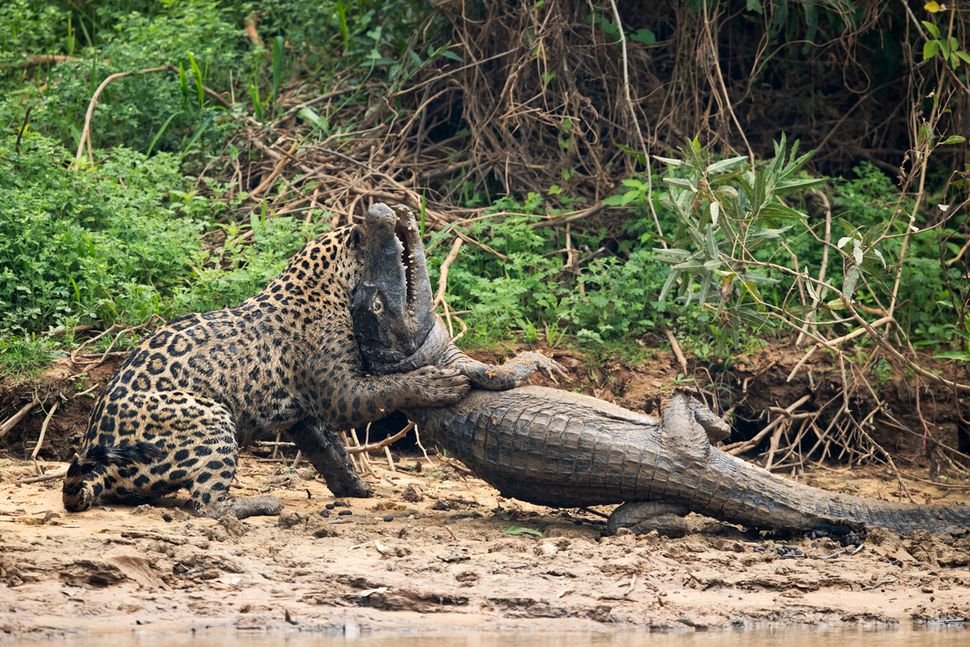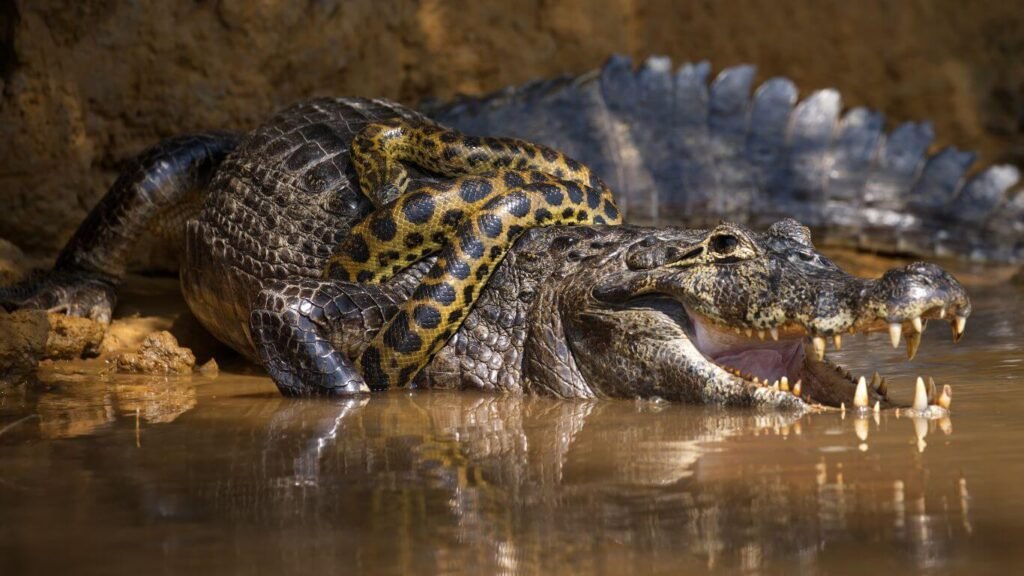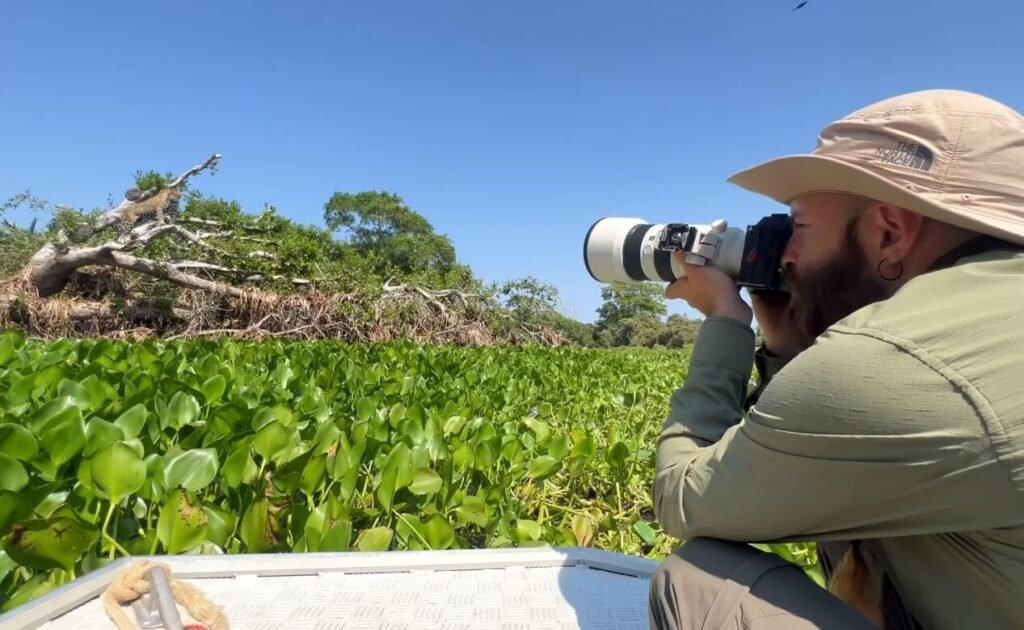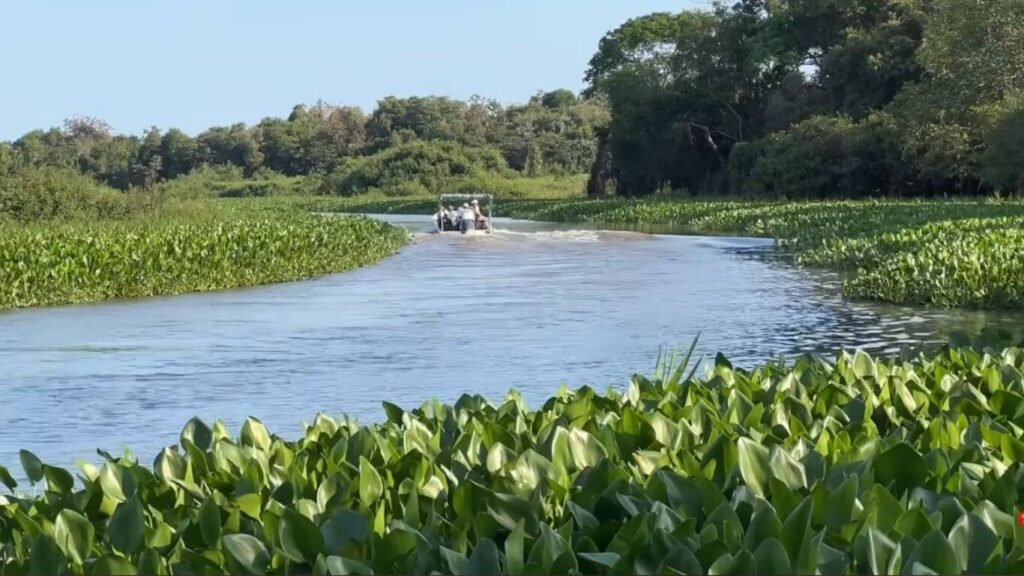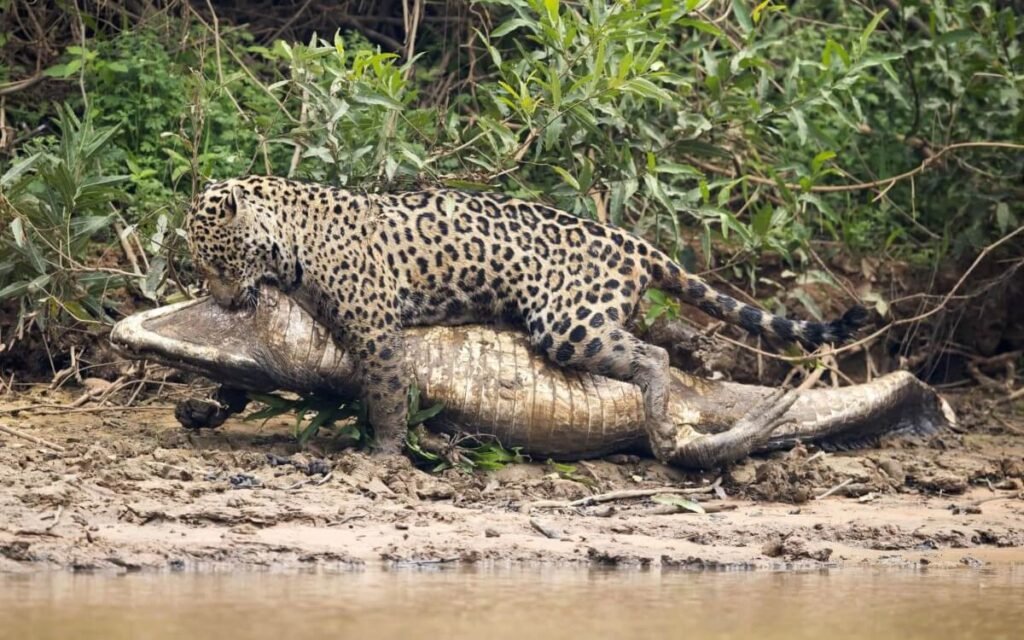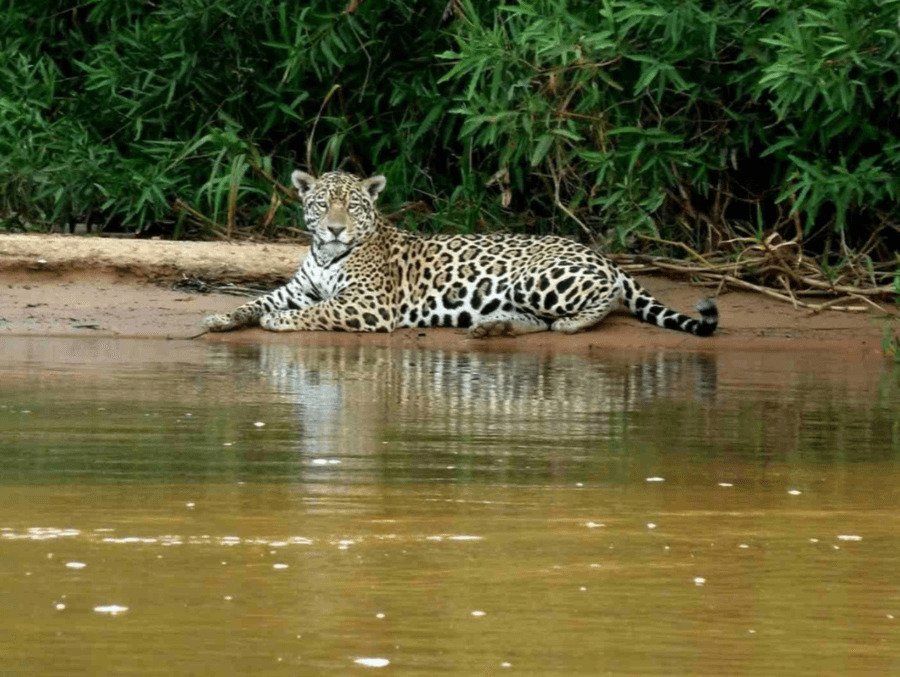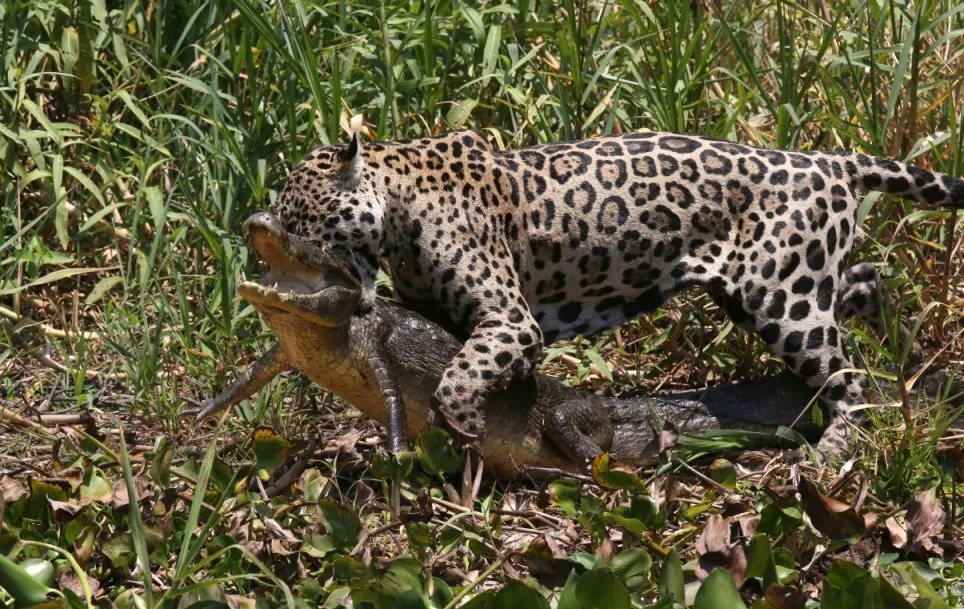The Brazilian Pantanal is one of the most sought-after destinations for wildlife observation, offering a unique setting where nature unfolds in all its splendor. This vast wetland, recognized as the largest in the world, invites you to experience a transformative adventure that combines ecotourism, exploration, and a deep respect for the environment. Here, you’ll find practical tips, the best time to visit, details about biodiversity, and how to choose the perfect tour to make your safari truly unforgettable.
Why choose the Pantanal for a wildlife safari?
The Pantanal stands out for its unique and accessible ecosystem. This makes wildlife observation easier compared to other destinations where close encounters with fauna are harder to come by. Unlike regions with dense vegetation, the Pantanal’s open spaces make it easy to spot iconic species. Among them are the jaguar and various exotic birds. The clarity of the landscape and the minimal human interference in some areas ensure that every encounter with nature is genuine and unspoiled. This makes the Pantanal the ideal setting for wildlife enthusiasts.
What is the best time to visit the Pantanal?
The dry season, from May to November, is the best time to explore the heart of the Pantanal. During this period, lower water levels concentrate wildlife in smaller areas. This makes wildlife observation in the Pantanal more accessible and exciting. Especially between July and October, animals gather around rivers and lagoons. This maximizes the chances of spotting big cats like the jaguar, as well as a wide variety of birds and other mammals. This period also offers pleasant weather conditions for outdoor activities, from boat safaris to guided hikes.
What species can be observed in the Pantanal?
The Pantanal is a sanctuary of biodiversity, home to an astonishing variety of species. Wildlife observation in the Pantanal will allow you to discover iconic animals in their natural habitat. Below is a list of some of the most representative species and a brief description:
- Jaguar (Panthera onca): The largest feline in the Americas, a symbol of power and agility, moving stealthily in search of prey.
- Capybara (Hydrochoerus hydrochaeris): The world’s largest semi-aquatic rodent, often seen in groups near bodies of water.
- Giant Otter (Pteronura brasiliensis): A large otter known for its swimming skills and charismatic presence in the water.
- Yacare Caiman (Caiman yacare): A robust reptile inhabiting the waters of the Pantanal, offering a fascinating spectacle as it releases bubbles on the surface.
- Anaconda (Eunectes murinus): The colossal snake, emblematic of tropical ecosystems, silently gliding through the vegetation.
- Tapir (Tapirus terrestris): A large mammal crucial for seed dispersal, often hidden in the green mantle of the surroundings.
- Hyacinth Macaw (Anodorhynchus hyacinthinus): A vibrantly colored bird and the largest species of macaw, adding a splash of color to the landscape.
- Howler Monkey (Alouatta spp.): A primate known for its powerful vocalizations, essential for the ecosystem’s balance.
- Giant Anteater (Myrmecophaga tridactyla): A unique mammal specialized in feeding on ants and termites, with an unmistakable appearance.
- Toco Toucan (Ramphastos toco): The iconic bird recognized for its large beak and striking colors, a symbol of tropical exuberance.
This diversity ensures that every excursion becomes a unique experience, where each encounter is a lesson in life and nature.
How to choose the right tour for a Pantanal safari?
Choosing the right tour is crucial to ensure that wildlife observation in the Pantanal is safe, educational, and thrilling. When selecting a tour, consider the following aspects:
- Operator specialization: Look for companies focused on wildlife observation, especially jaguar-spotting tours. Specialized operators have greater knowledge of animal behavior and the best routes for close encounters.
- Guide experience: It’s vital that local guides have extensive experience in the region and in interpreting the Pantanal’s biodiversity. Their knowledge will help you understand the area’s ecology and identify species.
- Group size: Small groups allow for a more personalized experience and enable more respectful interaction with the natural environment, minimizing the impact on wildlife.
- Variety of activities: A good tour should include diverse activities, such as boat safaris, guided hikes, and horseback rides, offering a comprehensive view of the ecosystem.
- Reviews and testimonials: Research reviews and recommendations from other travelers to ensure the service meets high standards of quality and sustainability.
Choosing operators committed to responsible ecotourism ensures that your adventure contributes to environmental preservation, which is essential for future generations to continue enjoying wildlife observation in the Pantanal.
What equipment and preparation are needed for the safari?
A Pantanal safari requires proper preparation. This is essential to ensure comfort and safety during wildlife observation. Here are some tips on the necessary equipment and preparation:
- Appropriate clothing: Bring lightweight, neutral-colored, and breathable clothing that blends with the environment. Avoid bright colors that may alert or scare animals.
- Sturdy footwear: Comfortable and durable boots are essential for navigating trails and uneven terrain.
- Sun protection: Don’t forget a wide-brimmed hat, sunglasses, and high-SPF sunscreen to protect your skin from the sun.
- Insect repellent: Mosquitoes and other insects are common, so a good repellent is essential to avoid discomfort and potential bites.
- Photography equipment: A camera with a good zoom and binoculars will allow you to capture incredible images without disturbing the wildlife. Remember that respectful observation is key to maintaining the tranquility of the environment.
- Hydration and snacks: Although many tours provide water and food, it’s advisable to bring a reusable water bottle. Energy snacks are also useful to keep you active throughout the day.
- Documentation and insurance: Ensure you have adequate travel insurance. Also, carry copies of important documents, especially if you’re participating in adventure activities.
With proper preparation, every outing becomes a richer and safer experience. This will allow you to fully enjoy every moment in the heart of the Pantanal.
What to expect during a Pantanal safari?
During a Pantanal safari, you can expect a multifaceted experience filled with memorable encounters with nature. Among the activities you’ll enjoy are:
- Boat safaris: Navigating the Pantanal’s rivers will allow you to observe species like caimans, jaguars, and various birds. You’ll also enjoy the serenity of the water and riverside vegetation.
- Guided hikes: Exploring natural trails offers the opportunity to learn about the flora and fauna in detail. Wildlife observation in the Pantanal becomes an educational and sensory experience.
- Horseback rides: This type of tour is ideal for accessing less-traveled areas. In these areas, interaction with nature is more direct, and the chances of spotting elusive animals increase.
- Night observation: Some tours organize nighttime outings to discover the behavior of species active after dark. This offers a fascinating contrast to daytime routines.
- Wildlife photography: Take the opportunity to capture unique images. Use nature photography techniques that respect the well-being of animals and the environment.
Each activity is designed to maximize contact with the natural environment. Thus, wildlife observation in the Pantanal becomes a comprehensive and deeply enriching experience.
How to contribute to conservation during your visit?
Ecotourism in the Pantanal is not just about observing wildlife but also contributing to its conservation. During your safari, it’s essential to adopt sustainable practices that minimize environmental impact. Some recommendations include:
- Respect distance: Always maintain a safe distance from animals and avoid interfering with their natural behaviors. This is crucial to ensure wildlife observation in the Pantanal is conducted without disrupting the ecosystem’s balance.
- Leave no trace: Collect all your trash and follow the guides’ instructions to preserve the cleanliness of the environment. The conservation of the Pantanal largely depends on the commitment of each visitor.
- Support local operators: Choose tours that work directly with local communities and promote responsible tourism practices. This not only benefits the regional economy but also fosters the conservation of natural resources.
By adopting a conscious and respectful attitude, every visitor becomes an ambassador for nature. This ensures that the experience of wildlife observation in the Pantanal remains viable and sustainable.
Frequently Asked Questions
1. What is the best time to go on a Pantanal safari?
The dry season, from May to November, is ideal for wildlife spotting, as the concentration of animals around water sources makes encounters easier. Between July and October, sightings of jaguars and other species are particularly common.
2. What equipment should I bring for a Pantanal safari?
It’s essential to bring lightweight, neutral-colored clothing and sturdy footwear. Also, don’t forget sun protection, insect repellent, a camera with a good zoom, and, if possible, a reusable water bottle to stay hydrated.
3. Are there specialized jaguar-spotting tours?
Yes, several operators specialize in jaguar-spotting tours. They offer personalized and safe experiences that maximize the chances of seeing these majestic cats.
4. What safety measures should I follow during my safari?
Always follow the guides’ instructions and maintain a safe distance from animals. Personal safety and environmental conservation are paramount.
Book your wildlife safari today and contact us to schedule your trip. Enjoy the observation of jaguars, exotic birds, and much more in this natural paradise. Contact us now and secure your spot on this unparalleled adventure!









